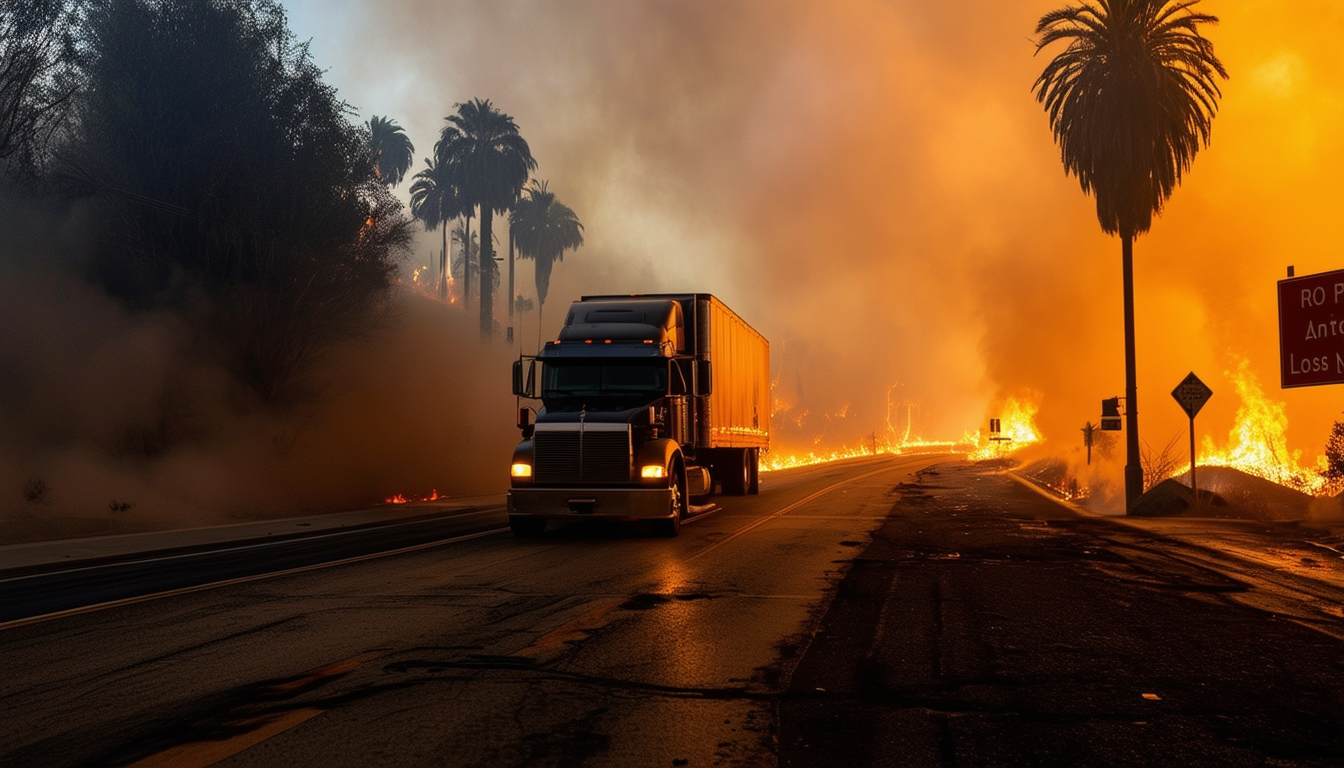Enhancing Supply Chain Resilience During LA Wildfires

As LA wildfires continue to disrupt the logistics industry, building a resilient supply chain becomes essential for maintaining operations and meeting customer demands.
Understanding the Impact of LA Wildfires on Supply Chains
The LA wildfires have a profound impact on supply chains, particularly in the trucking industry. These natural disasters can cause road closures, delays, and damage to infrastructure, making it difficult for trucks to transport goods efficiently. The unpredictability and severity of the fires can lead to disruptions in the delivery schedules, affecting the entire supply chain from manufacturers to end consumers.
Additionally, the health and safety of drivers are at risk due to the hazardous conditions created by the wildfires. Poor air quality and visibility can make driving dangerous, further complicating logistics operations. Understanding these impacts is crucial for developing strategies to mitigate the risks associated with wildfires.
Proactive Measures to Mitigate Wildfire Disruptions
To mitigate the effects of wildfires, shippers and logistics companies need to adopt proactive measures. First, developing a comprehensive emergency response plan is essential. This plan should include alternative routes, backup suppliers, and communication protocols to ensure that operations can continue with minimal disruption.
It's also important to maintain an inventory buffer. By keeping extra stock on hand, companies can continue to fulfill orders even if deliveries are delayed. Regularly updating and practicing emergency plans will ensure that all team members are prepared to respond quickly and effectively when a wildfire occurs.
Technological Innovations to Enhance Supply Chain Resilience
Leveraging technology can significantly enhance supply chain resilience during wildfires. Real-time tracking systems can provide up-to-date information on the location and status of shipments, allowing companies to reroute trucks away from fire-affected areas. AI and machine learning can predict potential disruptions and suggest optimal routes to avoid delays.
Additionally, advanced communication tools can facilitate better coordination among all stakeholders, ensuring that everyone is informed about changes in delivery schedules or routes. Investing in technology not only helps in managing current disruptions but also prepares the supply chain for future challenges.
Collaborative Strategies for Effective Crisis Management
Collaboration is key to effective crisis management during wildfires. Shippers, carriers, and local authorities must work together to share information and resources. Establishing strong relationships with multiple carriers can provide more flexibility in rerouting shipments and finding alternative transportation options.
Participating in industry forums and working groups can also help companies stay informed about best practices and emerging trends in crisis management. By fostering a collaborative environment, logistics companies can enhance their ability to respond to wildfires and other emergencies effectively.
Long-term Strategies for Building a Resilient Supply Chain
Building a resilient supply chain requires long-term planning and investment. Companies should invest in infrastructure improvements, such as fire-resistant warehouses and facilities located in less vulnerable areas. Diversifying the supplier base can also reduce dependency on a single source, which is particularly important when certain regions are affected by wildfires.
Regularly reviewing and updating risk management strategies is crucial for maintaining resilience. This includes conducting risk assessments, training employees, and investing in technologies that enhance operational flexibility. By adopting a proactive and strategic approach, companies can build a supply chain that is better equipped to handle the challenges posed by wildfires and other natural disasters.
